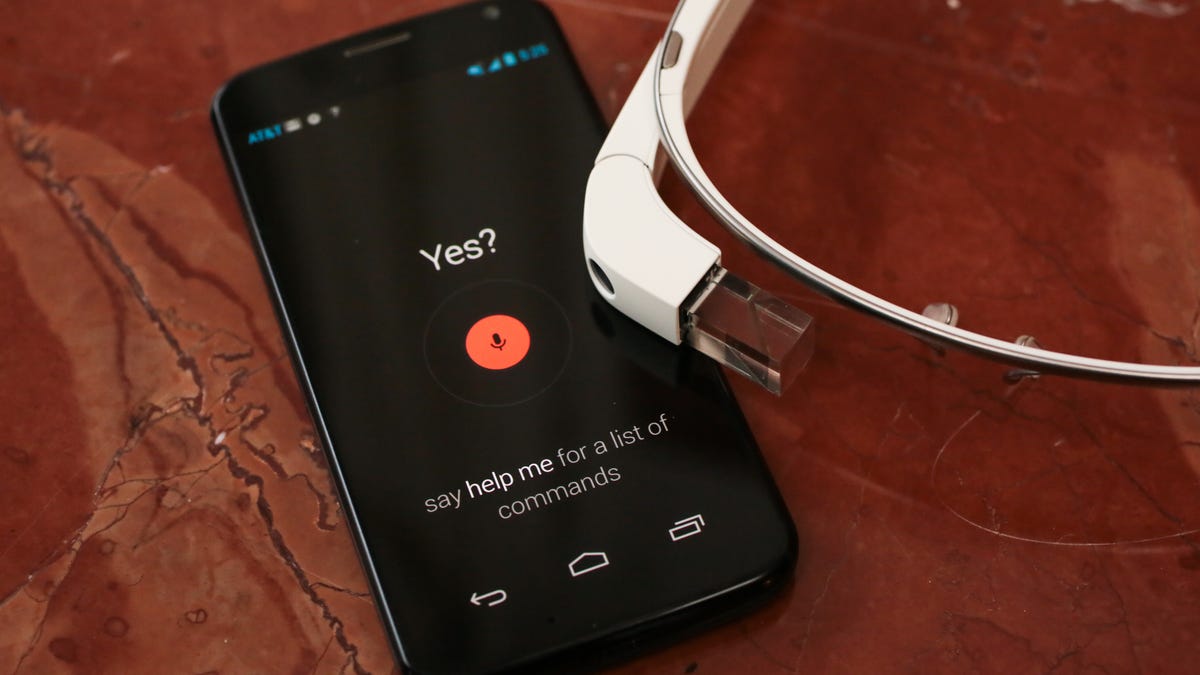Could the future of Glass and wearables be hidden in Moto X?
Motorola's latest phone has always-on voice connectivity, much like Google Glass. Maybe it's a hint at where Google's connected future is really heading.

Motorola's long-anticipated Moto X phone was unveiled yesterday amid much anticipation: would Google's ownership craft a new direction for Motorola? Would the phone be able to stand out from the crowd? And would it be sold with a Moto watch?
The watch rumor, born out of Motorola's previous history in smartwatches and, perhaps, the recent mania in watch tech, didn't come true. But the Moto X might have more interesting wearable ideas up its sleeve.
The Moto X features an "always listening" voice-command technology that taps into Google Now and works completely hands-free. "OK, Google Now," Motorola executives demonstrated, making phone calls and looking up appointments. It sounds a lot like Siri, but it sounds even more like my earlier experiences with Google Glass.
Google Glass, something most people can't even get their hands on, is a very smart camera, but it's also an embodiment of an always-on Google connection. So is the Moto X.
What if Glass is a technology vehicle more than a product? Could the Moto X -- coming out in a month -- be the beginning of that always-on Google product before Glass? And could it even represent where Glass might be morphing toward? Add a few extra wearable peripherals, and suddenly the idea doesn't seem so far-fetched.
OK, phone: Do everything
At Google I/O, voice-controlled Google services much like what the Moto X delivers were demonstrated on Chrome browsers. But it was Glass that started the "OK, Google" style of speak-to-your-device connectivity and made it interesting.
One of the chief features of the Moto X is its always-on voice connectivity, enabling you to speak requests much like Siri or Google Now currently allow, but without pressing any buttons at all. If you choose to, the Moto X simply listens, with finely tuned microphones that can hear you across a room. It'll even listen through a pocket.
If you're thinking of it in a car, or in a room, it sounds like an always-connected speakerphone. But I'm more interested in the idea of the Moto X in your pocket as you walk around.
It's not the first Motorola phone to adopt this idea: the Droid Maxx, Mini, and Ultra have similar touch-free voice features, too. But, the Moto X might be the phone most people associate the technology with. Could always-on listening be the start of a trend? Maybe, if the right kinds of headsets and software are made to deliver smart information back at you.
Audio augmented reality, versus a screen on your face?
Forget barking on a speakerphone and imagine a headset. Maybe it has good noise-canceling technology. Now you're speaking to your phone, much like you'd do with Siri, but with no button to activate.
That could be the start of a nightmare for some people, but the more interesting part of the equation could be if that always-on connectivity also delivered audio cues to your ear, delivering location-specific details in the same way a head-up display would without distracting your eyes. Location-aware apps and services could trigger information such as traffic alerts, sports scores, or flight arrival time changes, all spoken.
Maybe your phone could tell you a prescription was ready, or remind you when you're in a store that the shoes you like are on sale. Or maybe it says your friend's in the bar you're at, and tells you to look for him.
I imagine it as an auditory augmented reality, the equivalent of those little earbuds worn by agents in "The Matrix."
Future peripherals?
Motorola is keen to emphasize the Moto X as a hands-free device. Motorola's executives also explained that the Moto X will work with a "trusted Bluetooth device" to be part of that always-listening experience.
A headset would make the most sense, considering Motorola's background. Executives at the Moto X event acknowledged that connection, and did nothing to dissuade my thinking. Right now, that voice recognition service is best imagined with a headset.
But could there be more in store? A watch, like the one that was rumored alongside the Moto X, or maybe even a wearable camera headset? If you connected a camera and were able to voice-control recording, how different would it really be from Glass?
Wearables without the screen
You'd lack that distinctive, floating display of Google Glass in the scenarios I'm imagining, but that seems OK by me. A lot of wearable tech is about far more-discreet systems of notification: watches, little activity sensors, or earpieces.
As I said earlier this week, all of wearable tech must find a way to make itself more useful than a phone, arguably the most critical piece of semi-wearable tech you're likely to own. The Moto X's mission to stay in your pocket and remain unseen could be the future trend of all phones: being invisible, wireless hubs, linking to accessories that help it do our bidding completely unseen.
Maybe the Moto X is just one more small step in that direction.

